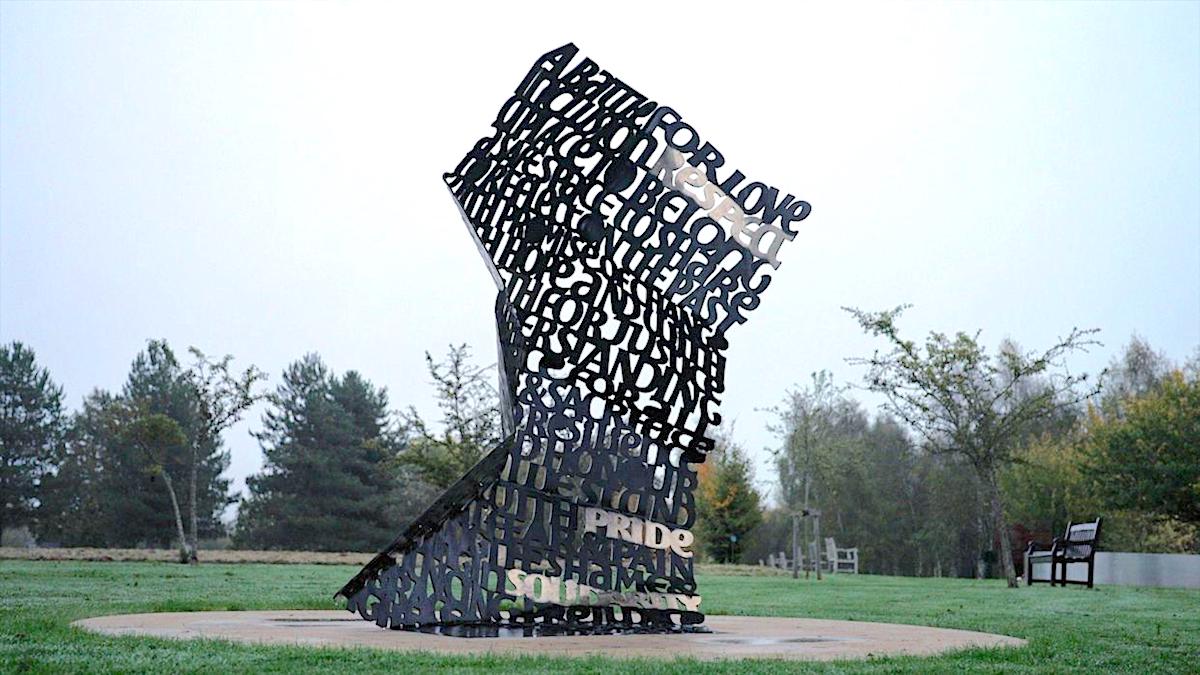King Charles returned to Staffordshire this week, bridging two moments of remembrance — one civic, the other personal at Lichfield Cathedral. At the National Memorial Arboretum, the King joined veterans, campaigners, and artists for the dedication of Crumpled Letter, the first official LGBTQ+ Armed Forces memorial — a work as emotionally charged as its subject. Commissioned by the charity Fighting With Pride, the sculpture was conceived by Norfolk and Suffolk collective Abraxas Academy and realised by artists Nina Bilbey, James Spedding, Charlotte Howarth, and Sue Aperghis.
Selected from 38 proposals earlier this year, the design takes its form from a letter — folded, crushed, and re-opened — echoing the private correspondence once used as evidence to destroy lives and careers under the military’s pre-2000 ban on gay and lesbian service members. Inscribed with extracts from Lord Etherton’s 2023 review and phrases of quiet optimism, the piece sits at a crossroads of grief and recognition.
“It exceeded my expectations,” said Spedding, whose metalwork brings a physical tension to the piece — something between armour and apology. “It carries so many voices inside it.”
Peter Gibson, chief executive of Fighting With Pride, called the unveiling “a deeply emotional moment.” For many of those present, it was the first time their service — and suffering — had been acknowledged by the institution they once served. “This memorial says what happened should never have taken place,” Gibson said. “It gives veterans and serving personnel a place to stand, to reflect, and to see themselves within the story of our country.”
For over three decades, from 1967 to 2000, members of the British military forces suspected of being gay or transgender were branded as unfit to serve. They were dismissed from the army, navy, and air force, often under a cloud of shame. Hundreds saw their medals taken away or lost their pension rights.
The stigma followed them for years, shadowing their lives long after their service ended. This policy changed only when the government was forced to lift the ban following a landmark 1999 decision by the European Court of Human Rights.
As the King laid a bouquet beside the sculpture, the crowd fell into a long silence broken only by the wind moving through the trees. No speeches followed. The act, simple and wordless, seemed enough.
In the span of a single afternoon, the visit tied together two very different expressions of national identity — the handmade and the monumental, the local and the collective, the faith of the cathedral and the reckoning of the memorial. If there was a thread between them, it was this: Britain’s story, however fractured, is still being written in the hands of its people.
Photo: Via Twitter

